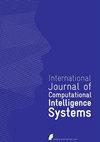基于深度对比学习和改进变形的三维人体运动姿态识别方法
IF 2.9
4区 计算机科学
International Journal of Computational Intelligence Systems
Pub Date : 2023-10-31
DOI:10.1007/s44196-023-00351-1
引用次数: 0
摘要
基于空间数据的三维人体姿态识别技术已受到广泛关注。然而,现有的模型和算法无法达到预期的精度。提出了一种基于深度对比学习和改进Transformer的三维人体运动姿态识别方法。改进的Transformer消除了人体运动RGB和深度图像之间的噪声,解决了3D模型中的方向相关性。使用图卷积网络(GCN)中的核生成模块从去噪的RGB图像中提取二维(2D)姿态特征。从去噪的深度图像中提取深度特征。利用GCN中的回归模块融合二维姿态特征和深度特征,得到三维姿态识别结果。结果表明,该方法能够捕获RGB和深度图像,识别精度高,速度快。该方法在三维人体运动姿态识别中具有良好的准确性。本文章由计算机程序翻译,如有差异,请以英文原文为准。
Recognition Method with Deep Contrastive Learning and Improved Transformer for 3D Human Motion Pose
Abstract Three-dimensional (3D) human pose recognition techniques based on spatial data have gained attention. However, existing models and algorithms fail to achieve desired precision. We propose a 3D human motion pose recognition method using deep contrastive learning and an improved Transformer. The improved Transformer removes noise between human motion RGB and depth images, addressing orientation correlation in 3D models. Two-dimensional (2D) pose features are extracted from de-noised RGB images using a kernel generation module in a graph convolutional network (GCN). Depth features are extracted from de-noised depth images. The 2D pose features and depth features are fused using a regression module in the GCN to obtain 3D pose recognition results. The results demonstrate that the proposed method captures RGB and depth images, achieving high recognition accuracy and fast speed. The proposed method demonstrates good accuracy in 3D human motion pose recognition.
求助全文
通过发布文献求助,成功后即可免费获取论文全文。
去求助
来源期刊

International Journal of Computational Intelligence Systems
工程技术-计算机:跨学科应用
自引率
3.40%
发文量
94
期刊介绍:
The International Journal of Computational Intelligence Systems publishes original research on all aspects of applied computational intelligence, especially targeting papers demonstrating the use of techniques and methods originating from computational intelligence theory. The core theories of computational intelligence are fuzzy logic, neural networks, evolutionary computation and probabilistic reasoning. The journal publishes only articles related to the use of computational intelligence and broadly covers the following topics:
-Autonomous reasoning-
Bio-informatics-
Cloud computing-
Condition monitoring-
Data science-
Data mining-
Data visualization-
Decision support systems-
Fault diagnosis-
Intelligent information retrieval-
Human-machine interaction and interfaces-
Image processing-
Internet and networks-
Noise analysis-
Pattern recognition-
Prediction systems-
Power (nuclear) safety systems-
Process and system control-
Real-time systems-
Risk analysis and safety-related issues-
Robotics-
Signal and image processing-
IoT and smart environments-
Systems integration-
System control-
System modelling and optimization-
Telecommunications-
Time series prediction-
Warning systems-
Virtual reality-
Web intelligence-
Deep learning
 求助内容:
求助内容: 应助结果提醒方式:
应助结果提醒方式:


